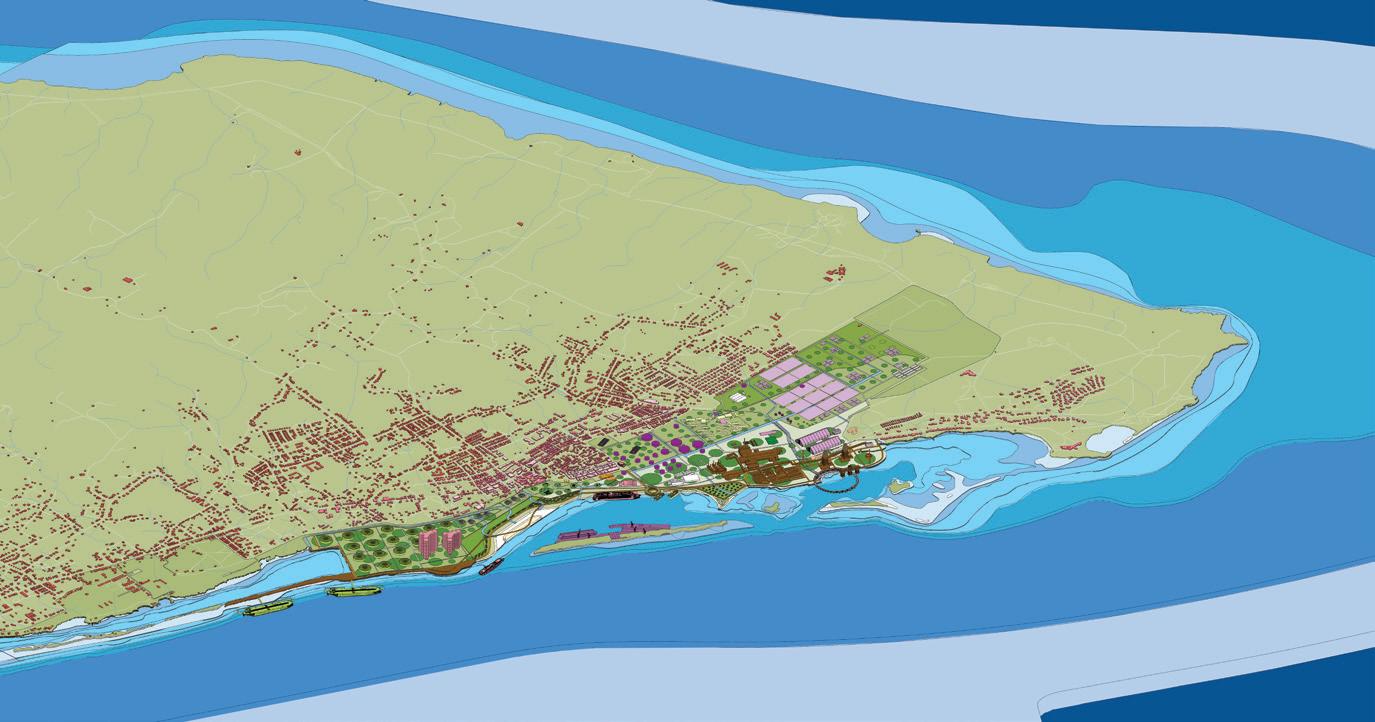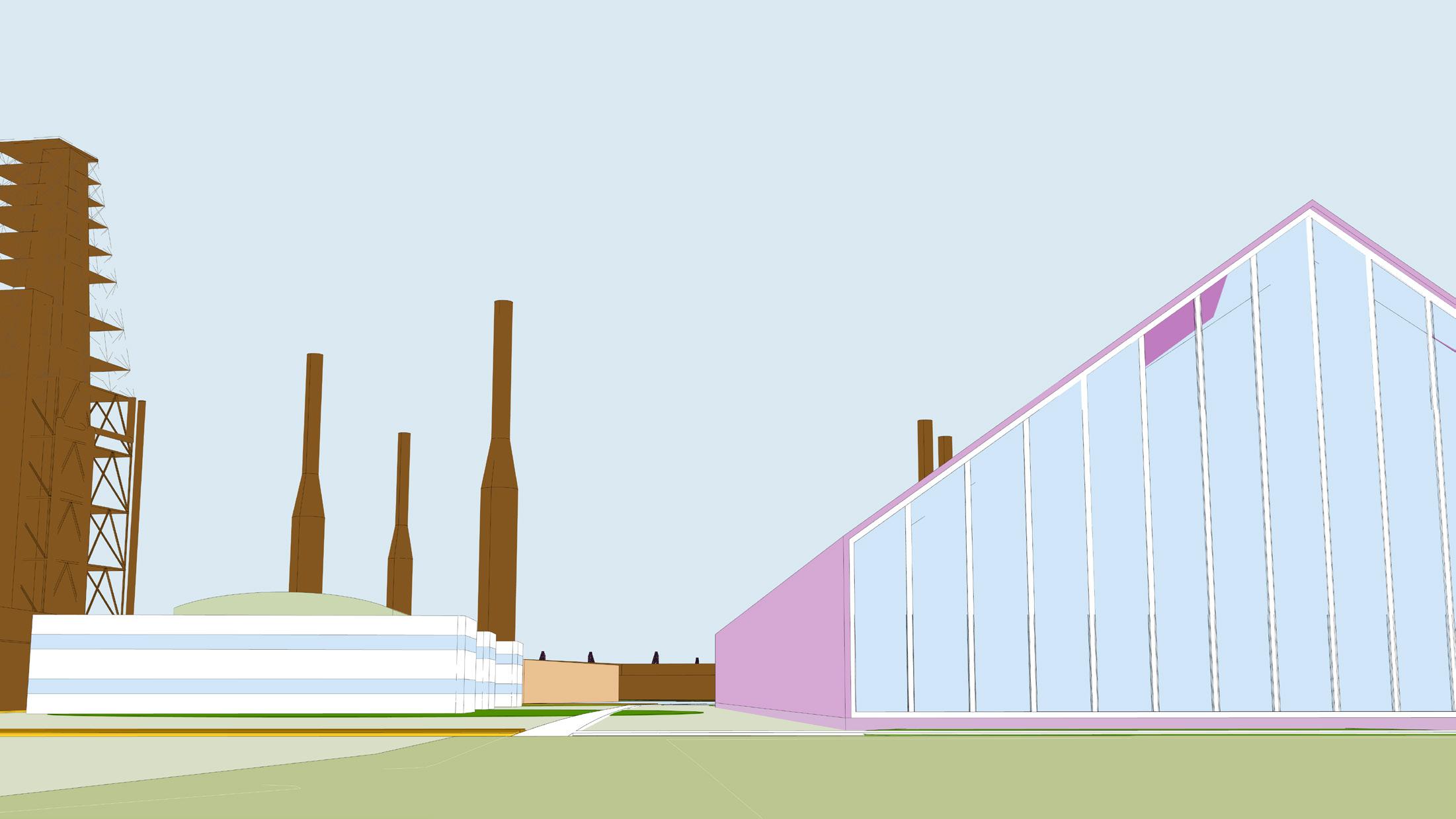Graduation Project: Manufactured Paradise
Worlds first refinery reclamation, showcasing sustainable alternatives.

San Nicolas 2021
My graduation project was an attempt to trigger change on my hometown of Aruba. The refinery which is oftentime underestimated has an incredible history. At its peak it one of the
worlds largest and played a vital role in the jet fuel provision of the Allied forces. Today the refinery has been abandoned
My proposal seeks to provide an alternative source of income while becoming a test case for the reclamation of the carbon infrastructure.


1918 - 1924
1933 - 1985
After the foundations was layed in the early years, Standard Oil of New Jersey would become the driving force behind the refinery.



The ‘Aruban Giant’ did not only manufacture a modern Aruban Identity. The aruban refinery was also a vital gateway for jet fuel for the Allied forces during the WWII.
1940 - 1945

Exxon produced 200,000 barrels until reduced by contract to 180,000 barrels in 1984.

EARLY YEARS
1909



OF NEW STANDARDJERSEYOIL
1928


The San Nicolas harbor was an ideal transshipment point as there was already some infrastructure.
By the end of the 1930s the Refinery was becoming one of the worlds largest.
1916 - 1920
2004 1985
Exxon closes and Coastal reopens to produce 150,000 barrels.
Standard Oil of New Jersey became Exxon Corporation.

COASTAL > EL PASO EXXON
The main gate before the construction of the refinery.
American soldiers were stationed at the Refinery during the war.
Valero to buy Aruba refinery from El Paso for $ 465 million.

2012 2021
After Valero couldnt find a buyer the refinery was put on stand-by, or mothballed.
Citgo attemps to restart the Refinery for $ 686 Million. 1972
The Refinery is still seeking for new tenants, however Venezuelan Oil is stil not a viable option.
VALEROMOTHBALLEDCITGOCLOSED
Aerial image taken looking towards the Headquarters in 1982. San Nicolas Main street during the 1962.


Esso Service Center opened in the Colony in 1955.


During the rapid expansion of the refinery, the non-American workfoce was housed in low cost housing outside the Colony.


THE REMEDIATEPOLLUTION
Before any activity can occur an indepth soil analysis should be conducted. This will determine




LANDSCAPE RESTORE THE
After remediation, ecologies can be created that promote endemic species. Simustaniously green




THE SITUATIONEXISTING
Is a troubled one as there is a lack of economic output, highly polluted sites and a refinery that
RESTORE
REMEDIATE
EXISTING
BUILD ENVIRONMENT REUSE THE

The final step is the reintegration of human activity to the site. Through the reuse of the build








Existing buildings like the Coke Barn on the Headquarters can be adapted to accelerate the islands ambition to become carbon-free and self sustainable.







Oceanfront
After the still active bunkering is deactivated the tank farm serves to produce oysters and algea.
Art District
By expanding the existing cultural hotspot to the coast, a new cultural route can be created through a sculpture garden.
Bayside
By terraforming the existing landscape becomes a harbour for the mangrove and oyster forest.


Downtown
The addition of a ship yard, ferry and cruise terminal incentivize not only companies but also locals to interact with the coast.
Carnival Village
Expanding on the existing Carnival Center and San Nicolas heritage. The tank farm provides a unique acoustic experience.
Upper Tank Farm

Which hasnt been used since the first closing of the refinery will become a production site for agriculture and renewable energy.
Barnyard
Buildings like the iconic Coke Barn or Headquarter are to be used to coordinate and promote circularity and sustainability.

Mangroves do not only protect the coast they can also become habitats.


 Mangrove Forest
Mangrove Island
Mangrove Forest
Mangrove Island


 Sculpture Garden
Art District
San Nicolas is already know for having the largest Art Murals in the Caribbean.
Sculpture Garden
Art District
San Nicolas is already know for having the largest Art Murals in the Caribbean.
Coastal Regeneration
Reconnecting San Nicolas with the coast through the terraformation and reintegration of endemic species.




 Sero Colorado Gate
Barnyard
San Nicolas is already know for having the largest Art Murals in the Caribbean.
Sero Colorado Gate
Barnyard
San Nicolas is already know for having the largest Art Murals in the Caribbean.


Historic Perspective
Showcasing the enormity of the Aruban giant and thereby interweaving the sites identity into its sustainable future.


